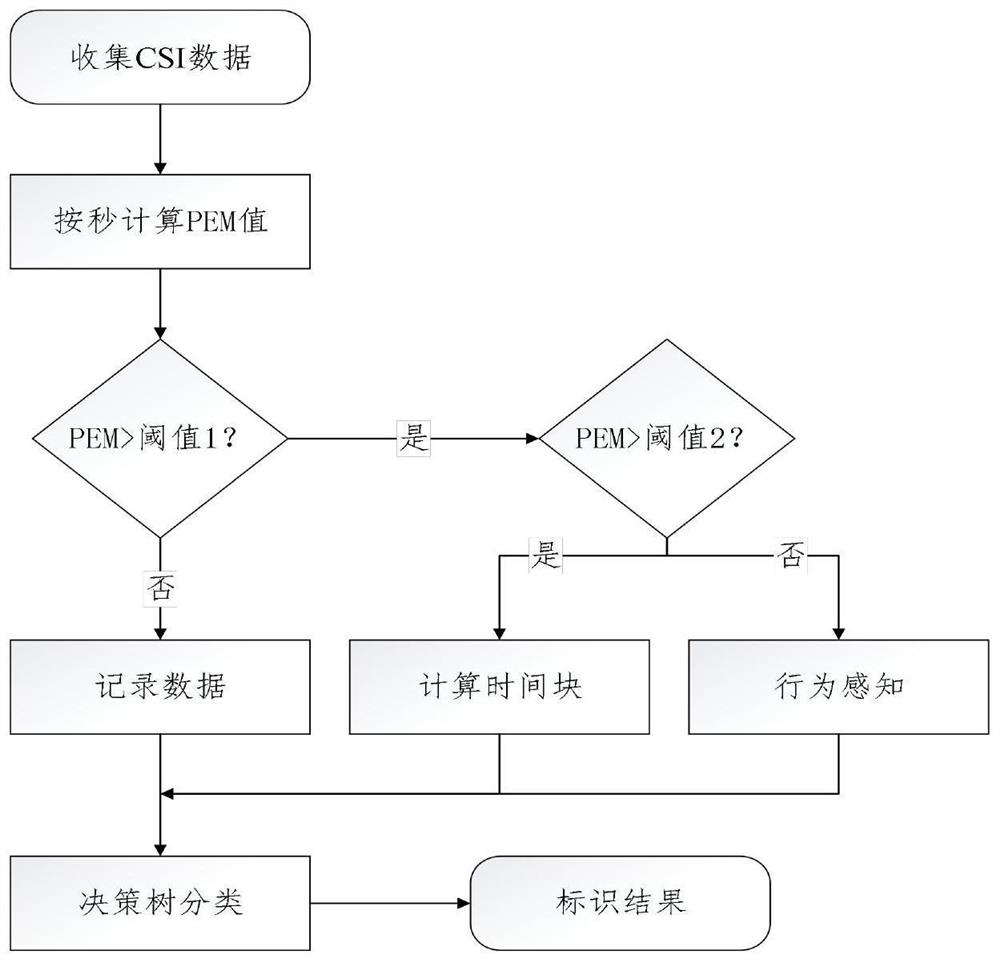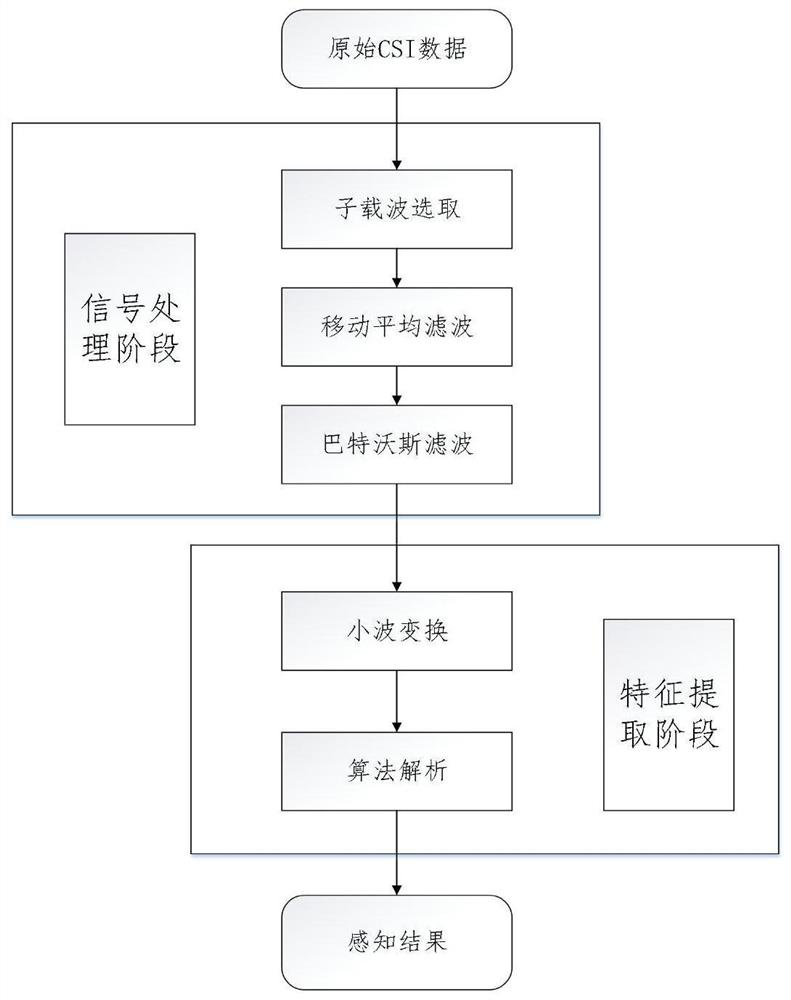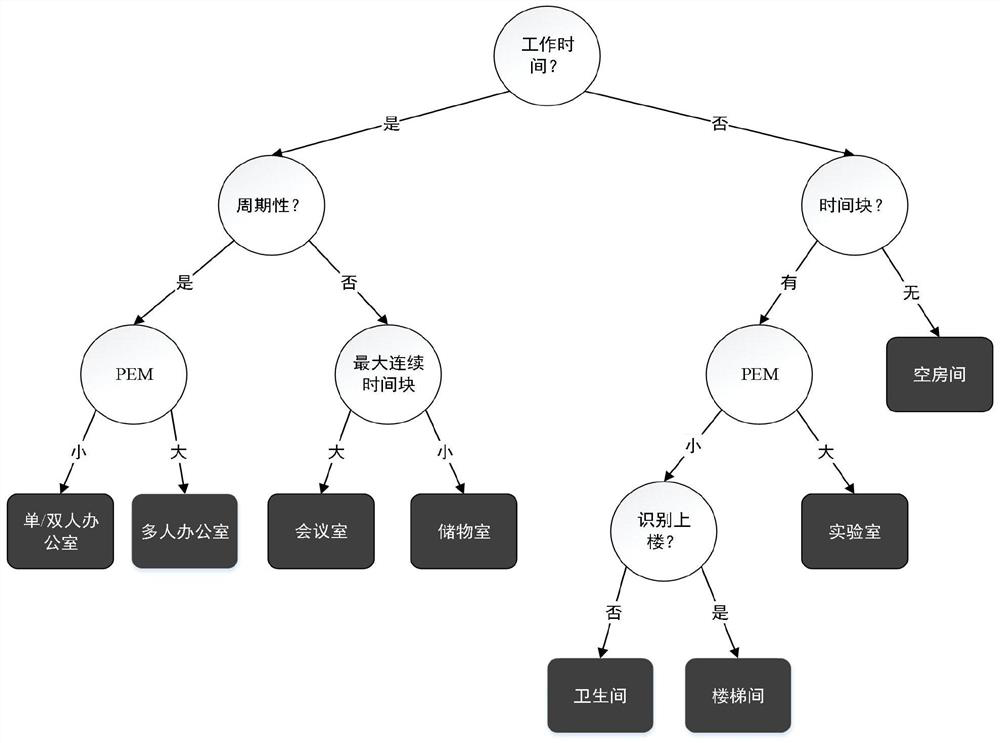Indoor map semantic identification method based on wifi channel state information
A technology of channel state information and semantic identification, applied in the field of Internet of Things, can solve the problems of inability to change room semantic identification in real time, narrow scope of application, and high energy consumption of equipment.
- Summary
- Abstract
- Description
- Claims
- Application Information
AI Technical Summary
Problems solved by technology
Method used
Image
Examples
Embodiment
[0040] Firstly, arrange the transmitting and receiving signal devices in the room to be semantically identified, and start collecting CSI data. The collected data is calculated by the formula (1) to calculate the PEM value per second. At this time, a threshold value of 1 is set to filter out the data with a PEM value less than one person. These data are recorded but not processed. The data greater than threshold 1 continues to judge whether it exceeds threshold 2, and threshold 2 is set as the upper limit of the PEM value when two people are active at the same time.
[0041] PEM(i)=Num(1) / P*P(1)
[0042] Among them, P*P is the total number of all elements of the matrix, and the obtained result is the PEM value of each subcarrier, which is averaged.
[0043] Through the PEM algorithm, real-time perception of the number of indoor environmental activities can be realized, and some useful information can be obtained by sensing the state of the environment. In the behavior percep...
PUM
 Login to View More
Login to View More Abstract
Description
Claims
Application Information
 Login to View More
Login to View More - R&D
- Intellectual Property
- Life Sciences
- Materials
- Tech Scout
- Unparalleled Data Quality
- Higher Quality Content
- 60% Fewer Hallucinations
Browse by: Latest US Patents, China's latest patents, Technical Efficacy Thesaurus, Application Domain, Technology Topic, Popular Technical Reports.
© 2025 PatSnap. All rights reserved.Legal|Privacy policy|Modern Slavery Act Transparency Statement|Sitemap|About US| Contact US: help@patsnap.com



